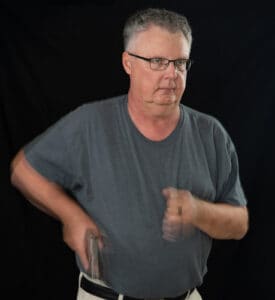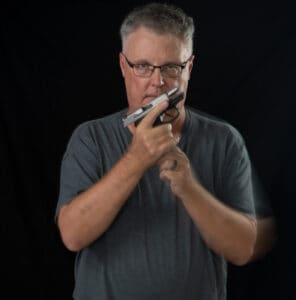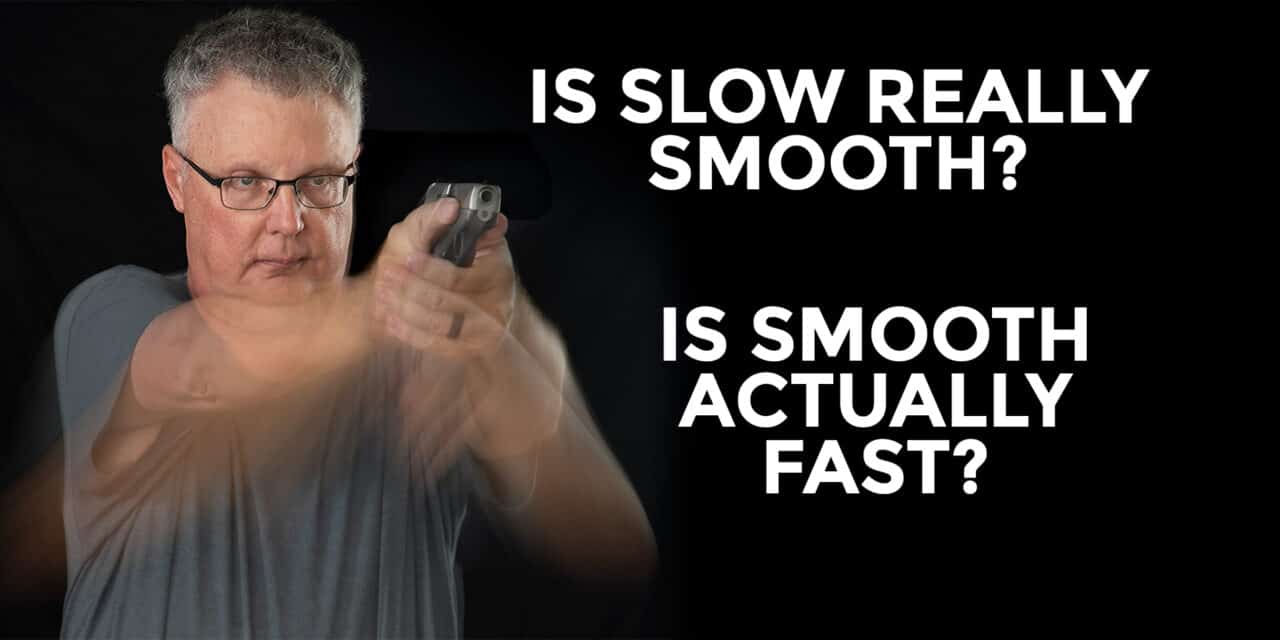“Slow Is Smooth, Smooth is Fast.” Or Is It?
If you’ve had any amount of pistol training beyond what’s required for a concealed carry permit, there’s a good chance your instructor or someone else in the class tried to help you along by saying, “Slow is smooth, smooth is fast” as you were struggling. Or maybe it was after a particularly awful stage at a practical shooting match, and one of your buddies said it to you as a way to make sure you remembered to do basic things like get a decent sight picture before pressing the trigger. Either way, “slow is smooth, smooth is fast” has become so ingrained in the firearms community, it’s become a common phrase to say when we need to correct a shooting issue.
How did this phrase come into common usage, though, and does it actually work? To answer this question, I turned to three of today’s top firearms trainers to get their opinions of using “slow is smooth, smooth is fast” as a way to help a struggling shooter.
Greg Ellifritz
Greg Ellifirtz is a recently retired law enforcement officer who, among other duties, served 13 years as the full-time tactical training officer for a central Ohio police department. He’s also a firearms trainer, writer, and a regular presenter at the Rangemaster Tactical Conference.
“ I understand the sentiment behind the phrase, but it makes people think that by moving slowly, they’ll eventually get fast. That’s not true,” Ellifritz says. “Smoothness does increase speed, but for optimal increases, we need to combine smoothness with going fast. I’m convinced that you can’t get fast unless you shoot fast in training, even if that (temporarily) means you lose some smoothness.”
I understand the sentiment behind the phrase, but it makes people think that by moving slowly, they’ll eventually get fast. That’s not true,” Ellifritz says. “Smoothness does increase speed, but for optimal increases, we need to combine smoothness with going fast. I’m convinced that you can’t get fast unless you shoot fast in training, even if that (temporarily) means you lose some smoothness.”
Spencer Keepers
Spencer Keepers makes some of the best AIWB holsters on the market today. He’s also a top firearms trainer with certifications from some of the best schools in the country, specializing in teaching people how to draw smoothly and efficiently from the appendix position.
“Slow is slow, smooth is smooth, and fast is fast,” Keepers says. “Most of the time, smooth is fast. But a lot of the time, fast is just fast, and it doesn’t have to be smooth.”
“There’s kind of a dichotomy in this,” Keepers went on to say. “Smooth can be fast, but you have to be going fast to begin with. When it comes to getting your gun in play, fast can be fast while looking like a train wreck. However, it’s still fast. If you perform an action smoothly, it will probably be faster, but first, we need to define what ‘fast’ actually is. Fast for a champion pistol shooter like Rob Leatham is one thing, fast for you and me is another thing altogether. The fast that works best is a fast that accomplishes the task quickly, no matter how smooth.”
“Just Slow Down.” Or Not.
“‘If you’re missing your target, slowing down may not be the end all, be all answer,” Keepers continued. “The simplest answer is not to move the gun during the trigger press, while keeping the sights/dot on the target. I see many people put way too much time into a shot that doesn’t require extra time. Normally, this builds a lot of anticipation and that causes a miss. even though they took their time. But remember there is a dichotomy here. Some targets obviously take more time than other targets, but they shouldn’t take an exorbitant amount of time or an artificial time pause.”
Scott Jedlinski
Scott Jedlinski (aka “Jedi”) is a martial artist and USPSA competitor who specializes in teaching the use of red dot optics on a pistol. He’s known for improving draw technique and decreasing the time needed to get your first shot with a pistol on-target. Scott has trained a wide variety of top-tier law enforcement units and is also an accomplished firearms writer. Here are his opinions on “Slow is smooth, smooth is fast.”
“Slow Is Smooth, Smooth Is Fast” Tells Only Part Of The Story
 “The origin of ‘slow is smooth, smooth is fast’ came from elite units of the U.S. military,” Jedlinski said. “The saying evolved from something Wyatt Earp said about trick shooting, ‘Make haste, slowly.’ The problem is, the original saying includes a critical piece which is always left out. The entire saying is “slow is smooth, smooth is fast and speed is the economy of motion’. This third part of the axiom means that speed is definitely a part of the whole process.”
“The origin of ‘slow is smooth, smooth is fast’ came from elite units of the U.S. military,” Jedlinski said. “The saying evolved from something Wyatt Earp said about trick shooting, ‘Make haste, slowly.’ The problem is, the original saying includes a critical piece which is always left out. The entire saying is “slow is smooth, smooth is fast and speed is the economy of motion’. This third part of the axiom means that speed is definitely a part of the whole process.”
“‘Slow is smooth, smooth is fast’ is used quite often in conjunction with the phrase ‘muscle memory’,” Jedlinski continued. “The problem is, there is no such thing as ‘muscle memory’.” Muscles have no memory. Nerves are what move muscles, and it’s there where the speed develops. If you repeat an action slowly and carefully, then the myelination of the nerves will allow for unconscious technique, and then the speed really starts to appear.”
Slow Is Smooth, Smooth Is Fast And Speed Is The Economy Of Motion
“Smooth and fast are related, but they are not the same thing, Jedlinski went on to say. “A draw can be bobbled at some point, but still be very fast. The idea that we should learn slowly, then smoothly and then speed will come is wrong. We should carefully learn good technique first, then practice so it becomes more and more subconscious, and then the speed will develop. If you go fast all the time with no technique, you will fail. In the same way, technique that never gets fast is also a failure. Technique opens the door to speed. Speed and accuracy come from efficiency, efficiency comes from technique. Instructors who say ‘slow is smooth, smooth is fast,’ omit that crucial last step. They offload the technique onto the student, and the student then continues to struggle.”
Even though it’s a popular saying, when it comes to firearms training, “Slow is smooth, smooth is fast” tells only part of the story. Going slow for slowness’s sake is not the solution. Proper technique is the key to improvement, not the speed you perform any given action. Learn that first, practice it regularly, and then the speed will come.


